Introduction:
Selecting the right ultralight tent can make or break your backpacking experience! When every ounce counts and comfort can’t be compromised, finding that perfect balance between weight savings and functionality becomes crucial. The best ultralight tents on the market today feature cutting-edge materials and designs, pushing the boundaries of what’s possible in lightweight shelter technology.
Whether you’re a thru-hiker planning to tackle the Pacific Crest Trail or a weekend warrior looking to shave weight from your pack, this guide will help you navigate the complex world of ultralight shelters. With options ranging from traditional freestanding designs to minimalist tarp tents, there’s a perfect ultralight solution waiting for you.
What Makes a Tent “Ultralight”?
When we talk about ultralight tents, we’re entering a specialized category of outdoor gear that prioritizes weight savings above almost everything else. But what exactly qualifies a tent as “ultralight”? Let me break this down based on my years of experience testing and using these specialty shelters.
Defining Ultralight: Weight Standards
The most obvious defining characteristic is weight. Generally speaking, an ultralight tent weighs less than 2-3 pounds (32-48 ounces). Some of the most extreme ultralight options can weigh under one pound! This is a dramatic difference from traditional backpacking tents that typically weigh 4-7 pounds.
Materials: The Key to Weight Reduction
This weight reduction doesn’t happen by accident. Manufacturers achieve these featherlight designs through a combination of innovative materials and minimalist features:
- DCF (Dyneema Composite Fabric) – Formerly known as Cuben Fiber, this material revolutionized the ultralight tent market with its incredible strength-to-weight ratio and inherent waterproofing.
- Silnylon (Silicone-impregnated nylon) – A more affordable alternative, offering excellent weight savings and strong water resistance.
- Silpoly (Silicone-impregnated polyester) – Similar to silnylon, but with better UV resistance and less stretch when wet.
Design Philosophy: Less Is More
The design philosophy behind ultralight tents also differs from conventional models. Many ultralight tents aren’t freestanding, instead relying on trekking poles for structural support—a clever way to eliminate tent pole weight since many hikers already carry trekking poles.
You’ll often find:
- Reduced interior space
- Thinner floor materials
- Fewer convenience features (like pockets or gear lofts)
Ultralight Travel: The Mindset Shift
What many new backpackers don’t realize is that this ultralight designation isn’t just about reducing pack weight—it represents an entire approach to wilderness travel.
Going ultralight often means making intentional compromises:
- Accepting slightly less durability
- Potentially more complex setups
- Possibly less weather protection in extreme conditions
Types of Ultralight Shelters
The ultralight tent spectrum includes several distinct shelter types, each with its own advantages:
- Semi-freestanding tents: Require fewer stakes while offering better stability than non-freestanding designs.
- Tarp tents: Hybrid designs combining a tarp’s weight savings with a tent’s bug protection.
- Pyramid shelters: Single-pole designs offering excellent storm protection at minimal weight.
- Bivy sacks: Minimalist, close-fitting shelters for the most weight-conscious adventurers.
Understanding what makes a tent truly “ultralight” helps you make informed decisions about whether the weight savings justify the potential compromises for your particular adventure style. For many long-distance hikers and backpackers, the answer is a resounding yes!
Top Ultralight Tent Picks for 2025
I’ve been through more tents than I care to admit over the years! After thousands of trail miles and hundreds of nights under various ultralight shelters, I’ve developed some strong opinions about which options truly deliver. Here’s my breakdown of the absolute best ultralight tents for 2025, based on real-world testing and experience.
Best Overall Ultralight Tent: The King of Versatility
Durston Gear X-Mid Pro 2
- Weight: 18.3 oz (yes, under 1.2 lbs!)
- Price: $679
- Key Features: Dyneema Composite Fabric (DCF) construction, trekking-pole design, dual vestibules, storm-ready geometry.
- Why It Wins: Dan Durston knocked it out of the park again. The X-Mid Pro 2 blends ultralight minimalism with livable space, offering two doors, bomber weather resistance, and a vertical-walled design that feels more like a palace than a coffin. I survived a 3-day downpour in Oregon’s Cascades with zero leaks—and still had room for my gear.
- Trade-Offs: Requires trekking poles (not freestanding), and the price tag will make your wallet weep.
Runner-Up: Zpacks Duplex Flex ($749) – Slightly heavier (19 oz) but modular for solo or duo use.
Best Budget Ultralight Tent: High Performance, Low Cost
Lanshan 2 Pro (2025 Model)
- Weight: 2 lbs 3 oz
- Price: $189
- Key Features: Silicone-coated nylon (20D), dual doors, trekking-pole compatible, compact packing size.
- Why It Wins: The 2024 update fixes earlier seam-taping issues, making this Chinese-made gem a steal. I’ve used it on 200+ miles of the Colorado Trail, and it holds up to moderate rain and wind. For under $200, you get 90% of the performance of tents triple the price.
- Trade-Offs: Heavier than DCF options, and setup requires patience (watch YouTube tutorials first).
Budget Bonus: Naturehike CloudUP 1P ($129) – Freestanding, 2.4 lbs, ideal for beginners.
Best Ultralight Tent for Solo Backpackers: Go Light or Go Home
Gossamer Gear The One
- Weight: 1 lb 5 oz
- Price: $325
- Key Features: Single-wall DCF, 360° visibility with rolled-up walls, 9 sq ft floor space.
- Why It Wins: This tent is stupid light. On Arizona’s AZT, I loved stargazing through the mesh ceiling and packing it down to the size of a Nalgene. The 2024 model adds reinforced guy-out points for better wind stability.
- Trade-Offs: Condensation builds up in humid climates, and tall folks (over 6’) might feel cramped.
Solo Alternative: Six Moon Designs Lunar Solo ($275) – More floor space (27 sq ft) but slightly heavier (1 lb 11 oz).
Best Ultralight Tent for Couples & Groups: Love (and Space) Conquers All
Big Agnes Tiger Wall UL3 Solution-Dyed
- Weight: 2 lbs 12 oz (3P)
- Price: $550
- Key Features: 3-person capacity, dual doors/vestibules, eco-friendly “solution-dyed” fabric, freestanding.
- Why It Wins: My partner and I (plus a 60-lb dog) fit comfortably in this tent. The vertical walls and 40D nylon floor handle rough terrain, and the color-coded poles make setup idiot-proof. It’s the rare tent that’s light enough for thru-hiking yet roomy enough to avoid divorce arguments.
- Trade-Offs: Not ideal for heavy snow, and the price jumps if you want DCF.
Group Hack: Split the weight! The Tiger Wall UL3 divides into two stuff sacks (fly + body), so each hiker carries ~1.3 lbs.
Best Four-Season Ultralight Tent: For When the Apocalypse Hits
Hyperlite Mountain Gear Ultamid 2
- Weight: 1 lb 12 oz (with insert)
- Price: $1,295 (bundle)
- Key Features: Full DCF construction, modular design (use with or without inner tent), withstands 60+ mph winds.
- Why It Wins: I’ve pitched this in Patagonia’s hurricane-force gusts and January snowdrifts in Wyoming. The pyramid shape sheds wind like nothing else, and the optional mesh insert keeps bugs out in summer. It’s more of a “fortress” than a tent.
- Trade-Offs: You’ll pay alpine prices, and setup requires practice (and ski poles/trekking poles).
Winter Runner-Up: Mountain Hardwear Trango 2 (4 lbs 15 oz) – Heavy but bombproof for serious mountaineering.
Key Trends for 2025: What’s New in Ultralight
- Eco-Friendly Fabrics: Brands like Big Agnes and Nemo now use “solution-dyed” polyester (source), reducing water waste by 90% during production.
- Modular Designs: Tents like the Zpacks Duplex Flex let you remove panels for weight savings or ventilation.
- DCF for the Masses: Once a niche material, Dyneema is now in mid-range tents like the Durston X-Mid Pro.
The “Don’t Buy” List: Ultralight Traps to Avoid
- Tents Without Storm Guylines: Some budget models skimp here. If your tent lacks reinforced guylines (looking at you, 3F UL Gear), a stiff breeze will turn it into a kite.
- Single-Wall Tents in Humidity: Save the Gossamer Gear The One for arid climates. In the Smokies? You’ll swim in condensation.
- Freestanding Tents for Thru-Hikes: Unless you’re hiking the PCT (well-maintained campsites), trekking-pole tents save weight and pack space.
Final Verdict: How to Choose Your 2025 Ultralight Tent
Ask yourself:
- “What’s My Max Weight?” If >2.5 lbs, you’re not ultralight.
- “Will I Share This Tent?” Splitting weight? Size up (e.g., 3P for two).
- “What’s My Worst-Case Weather?” Match the tent to your riskiest forecast.
My No 1 tip? Rent before you buy. Sites like Outdoor Gear Exchange let you test tents like the Hyperlite Ultamid for $30/day—way cheaper than buyer’s remorse.
2025 Ultralight Tent Showdown: Trail-Tested Comparison
| Model | Weight | Price | Capacity | Best For | Key Features | Trail Performance |
|---|---|---|---|---|---|---|
| Durston X-Mid Pro 2 | 1.14 lbs (18.3 oz) | $679 | 2P | All-weather versatility Thru-hiking | DCF construction Dual vestibules Trekking-pole design | ★★★★★ Survived 3-day Cascade rainstorm • Zero leaks, taut pitch in 40 mph winds |
| Lanshan 2 Pro | 2.19 lbs | $189 | 2P | Budget backpacking Weekend trips | SilNylon fabric Dual doors Trekking-pole compatible | ★★★☆☆ Held up on Colorado Trail thunderstorms • Seam tape improved in 2024, but fabric snags easily |
| Gossamer Gear The One | 1.31 lbs (21 oz) | $325 | 1P | Solo hikers in Arid climates | Single-wall DCF Roll-up walls for stargazing Ultra-compact | ★★★★☆ Stellar on Arizona’s AZT (dry) • Condensation nightmare in Smoky Mountains |
| Big Agnes Tiger Wall UL3 | 2.75 lbs | $550 | 3P | Couples Dog owners | Freestanding Dual doors/vestibules Eco-friendly fabric | ★★★★☆ Roomy for 2+ gear in Bob Marshall Wilderness • Easy pitch after long days, weak in heavy snow |
| Hyperlite Ultamid 2 | 1.75 lbs* | $1,295 | 2P* | Alpine expeditions, Winter trips | Full DCF pyramid Modular insert Storm-ready | ★★★★★ Dominated Patagonia’s 60 mph gusts • Overkill for summer trips, pricey but bombproof |
Key Features to Consider When Choosing an Ultralight Tent
I learned the hard way that buying an ultralight tent based on weight alone is a rookie mistake! On my first ultralight tent purchase, I grabbed the lightest option I could afford, only to find myself miserable in a claustrophobic shelter that collected condensation like it was going out of style.
Let me save you from my mistakes by breaking down the critical features you should consider beyond just the weight number:
Packed Weight vs. Trail Weight
When comparing weights, pay attention to the distinction between packed weight and trail weight. I once bought a tent advertised at 28 ounces, only to discover that was the “trail weight” (just the tent body and rainfly) while the packed weight with stakes, guylines, and stuff sack was over 2 pounds! Most manufacturers list both, but trail weight often appears more prominently in marketing. For realistic planning, I always go by packed weight minus any components I don’t plan to bring.
Interior Space and Comfort
Interior space can make or break your experience. I’m 6’1″, and I’ve spent too many nights with my head and feet touching both tent walls—a recipe for condensation transfer straight to your sleeping bag!
Key dimensions to check:
- Length: At least 85″ for taller campers
- Width: 30-32″ for solo tents (enough room for a standard sleeping pad with some gear space)
- Peak height: 40-45″ to allow sitting up comfortably
Weather Protection
Weather protection varies dramatically between models. My first night in a torrential downpour with my ultralight tarp tent taught me the importance of extended vestibules and adequate storm protection!
Look for:
- Full coverage rainflies for serious weather
- Adequate ventilation to prevent condensation buildup
- Strong guyout points that won’t tear in high winds
Ease of Setup
Setup complexity is rarely discussed but critically important. Nothing’s worse than arriving at camp exhausted, with darkness falling and rain threatening, only to struggle with a complicated pitch process! Some ultralight tents require 8-12 stakes in specific configurations, while others can be set up with just 4-6. I prefer designs with some flexibility in their pitch, allowing for quick setup in less-than-ideal conditions.
Ventilation: Preventing Condensation Issues
Ventilation might be the most overlooked aspect of ultralight tents. I’ve spent nights in perfectly waterproof shelters that were absolutely miserable due to heavy condensation dripping on me all night.
Look for features like:
- Kickstand vents
- Multiple doors
- Adjustable peak vents
Single-wall designs need exceptional ventilation strategies to prevent condensation, while double-wall designs generally manage moisture better at a slight weight penalty.
Durability vs. Weight Tradeoffs
Durability always involves tradeoffs. The 7D floor on my first ultralight tent developed holes within weeks, teaching me to either bring a footprint or choose models with slightly thicker materials for the floor.
Areas to assess:
- Floor denier: 15-20D offers better durability than 7-10D
- Zippers: #3 zippers last longer than #2
- Pole materials: Aluminum vs. Carbon Fiber (Aluminum is more durable, carbon is lighter but more fragile)
After years of trial and error, I’ve found that a balance of these features—rather than focusing solely on the lightest option—leads to the best backpacking experience. An extra few ounces in exchange for better livability, easier setup, and improved durability has made all the difference in my enjoyment of the backcountry!
Common Ultralight Tent Materials
I’ve always been fascinated by how much tent materials have evolved since I started backpacking! When I first got into ultralight hiking, I was completely overwhelmed by all the fabric acronyms and technical specifications.
After much trial and error (and some expensive lessons), I’ve developed a good understanding of the main materials that make these featherweight shelters possible.
Dyneema Composite Fabric (DCF): The Game-Changer
DCF (Dyneema Composite Fabric) was a complete game-changer for me. The first time I handled a DCF tent, I was convinced it would tear instantly—it feels like crinkly paper! But this incredible material is actually the strongest fabric by weight available for tents.
- My DCF shelter has withstood 40+ mph winds that had traditional tents around me flattening.
- The waterproofing is built into the material itself rather than being a coating, which means it doesn’t degrade over time.
- The downside? My wallet still hasn’t recovered from the purchase! DCF typically adds $200-300 to the price compared to similar silnylon designs.
- It also doesn’t pack down as small as other fabrics, taking up precious space in my pack.
Silnylon vs. Silpoly: Key Differences
The silnylon vs. silpoly debate had me confused for years. Both are coated with silicone for waterproofing, but they behave quite differently in real-world conditions.
- My first silnylon tent would sag noticeably when wet, requiring middle-of-the-night adjustments during rainstorms—not fun!
- Silpoly has much less stretch and maintains its taut pitch even when soaking wet.
- However, silnylon generally has better tear strength.
- After using both extensively, I prefer silpoly for most conditions despite silnylon being more common in the market.
Tent Poles: Aluminum vs. Carbon Fiber
Tent poles make a huge difference in both weight and durability. I learned this lesson the hard way when my ultralight aluminum poles bent during a surprise snowstorm in the Sierras.
- Aluminum poles (usually DAC) are the standard, offering a good balance of weight, strength, and affordability.
- Carbon fiber poles can save 2-4 ounces in a typical setup but come with two significant downsides:
- They’re considerably more expensive
- They’re more prone to catastrophic failure (snapping rather than bending) when overstressed
- For most backpacking situations, I’ve found good aluminum poles to be the sweet spot.
Groundsheets and Footprints: Are They Necessary?
Footprints are another area where material choice matters. The polycro plastic (basically thick window insulation film) I used as a groundsheet for years weighs just 1-2 ounces and costs under $10, dramatically outperforming the manufacturer’s 4-ounce, $40 footprint.
- Tyvek homebrew footprints are slightly heavier but more durable for rocky terrain.
Emerging Tent Materials: The Future of Ultralight Shelters
What excites me most are the emerging materials on the horizon. I’ve been testing a tent with new bio-based waterproof fabrics that eliminate the need for harmful PFCs while maintaining performance.
- Several manufacturers are also developing silicone-elastomer coated fabrics that combine silnylon’s strength with silpoly’s stability.
- These innovations promise to make ultralight tents not just lighter but also more environmentally sustainable and functional.
What material lesson I wish someone had taught me earlier? The lightest option isn’t always the best choice for your specific needs. Understanding the properties and tradeoffs of each material will help you select a tent that matches your priorities, whether that’s absolute minimum weight, maximum durability, or something in between.
Ultralight Tent Maintenance and Care
I’ll never forget the sinking feeling in my stomach when I unpacked my expensive ultralight tent after a long trip and discovered black mold spots covering the fabric. All because I’d been too tired to properly dry it before storage! That $500 lesson taught me that proper care is absolutely essential for ultralight gear, where the materials are often more delicate and the financial investment more significant.
Cleaning Your Ultralight Tent
Cleaning ultralight tents requires a gentle touch. I learned the hard way that regular soap creates residue that can damage waterproof coatings.
- Now I only use specialized products like Nikwax Tech Wash or simply lukewarm water with a soft sponge.
- For my DCF tent, I discovered that diluted white vinegar (1:4 with water) safely removes stubborn dirt without compromising the material.
- Whatever you do, avoid the washing machine! Even on gentle cycles, the agitation can destroy ultralight fabrics and seam tape.
Drying and Storing Your Tent Properly
Proper drying and storage might seem obvious, but they’re where most people mess up (including past me).
- After a particularly wet trip in the Pacific Northwest, I was tempted to leave my tent packed until the next weekend. Big mistake!
- Now I always set up my tent in the backyard or hang it over a shower rod to ensure it’s 100% dry before storage.
- For long-term storage, I never use the stuff sack—instead, I loosely fold the tent in a large cotton bag and store it in a climate-controlled closet.
- This prevents creases and compression that can damage waterproofing over time.
Field Repairs: Fixing Damage on the Trail
Field repairs have saved several of my trips from disaster.
- I never hit the trail without a small repair kit containing:
- Tenacious Tape patches (clear for my rainfly, colored for the floor)
- A needle and dental floss (stronger than regular thread)
- A small tube of Seam Grip
- When I snagged my tent door on a branch in the Winds, a quick Tenacious Tape patch held perfectly for the remaining 8 days of my trip.
- My repair kit weighs less than 2 ounces but has saved me from trip-ending tent failures multiple times.
Waterproofing Maintenance: Keeping Your Tent Dry
Waterproofing maintenance varies dramatically by material type.
- My silnylon tent required seam sealing before first use and occasional reapplication in high-wear areas.
- In contrast, my DCF tent came with factory-taped seams that never needed maintenance.
- Most modern tents need periodic reapplication of DWR (Durable Water Repellent) treatment—when water starts soaking into the fabric rather than beading up, it’s time for a refresh.
- I use Nikwax TX. Direct spray-on for this and find it needs reapplication roughly every 30-40 nights of use.
Preventative Care: Choosing the Right Campsite
The best maintenance tip I’ve learned is preventative: site selection makes an enormous difference in tent longevity.
- I always take an extra minute to remove small rocks and sticks from my tent site and look overhead for widow-makers (dead branches that could fall).
- When camping on abrasive surfaces like granite slabs in the Sierra, I’m now religious about using a groundsheet, even if it means carrying an extra ounce or two.
Following these care practices has extended the life of my ultralight tents dramatically. My current shelter has over 200 nights of use and still performs like new, proving that ultralight doesn’t have to mean disposable when you give your gear the TLC it deserves!
Ultralight Tent Alternatives
I’ll admit it—I was a tent purist for years! The idea of sleeping in anything else seemed sacrilegious until a thru-hiking friend convinced me to try a hammock setup. That experience opened my eyes to the world of tent alternatives, each with unique advantages for ultralight backpacking.
Hammock Systems: Comfort Above Ground
Hammock systems revolutionized my approach to camping in forested areas.
- My first night suspended between trees was honestly the best sleep I’d ever had outdoors!
- A complete ultralight hammock system (hammock, bug net, tarp, and suspension) typically weighs 1.5-2.5 pounds—comparable to many ultralight tents.
- The comfort is unbeatable on uneven terrain, and I no longer waste time searching for that perfectly flat tent site.
Downsides:
- I learned about “cold butt syndrome” the hard way when temperatures dropped unexpectedly in the Smokies.
- An underquilt is essential in temperatures below 60°F, adding weight and cost.
- Hammocks require trees, making them impractical in alpine or desert environments.
Bivy Sacks: Minimalist Shelter for Fast and Light Travel
Bivy sacks represent the absolute minimalist approach.
- My first bivy experience came during an unexpected overnight on a climbing trip, where we needed to travel light and fast.
- The claustrophobia was real!
- At 8-16 ounces, bivies are the lightest fully-enclosed shelter option, offering protection from bugs and precipitation in an incredibly small package.
- They’re perfect for alpine missions, bike touring, or any scenario where space is at an absolute premium.
Downsides:
- The confined space makes them uncomfortable for extended trips—changing clothes or organizing gear becomes a contortionist act.
- Condensation management is also challenging, especially in humid environments.
Tarp Configurations: Versatile and Lightweight
Tarp configurations offer tremendous versatility at minimal weight.
- A simple 8×10 silpoly flat tarp weighs around 12 ounces and can be pitched in countless configurations depending on conditions.
- I’ve used a diamond pitch in light rain, an A-frame during storms, and a lean-to for maximum ventilation on clear nights.
- The open sides provide unmatched views and airflow, eliminating condensation issues altogether.
Downsides:
- The learning curve for proper pitching was steeper than I expected.
- I’ve had my share of midnight readjustments when I got the tension wrong!
- The obvious limitation is bug protection—in mosquito season, I add a separate mesh inner or head net and groundsheet.
Cowboy Camping: Sleeping Under the Stars
Cowboy camping (no shelter at all) has become my preferred method in the desert Southwest during dry seasons.
- Nothing compares to falling asleep directly under the stars!
- This zero-weight approach works surprisingly well in predictable weather but requires good judgment and always having an emergency shelter option.
- I carry a small 5×8 tarp (6 ounces) that stays packed unless unexpected weather moves in.
After experimenting with all these alternatives, I’ve learned that the “best” shelter isn’t universal—it depends entirely on your environment, trip duration, and personal preferences.
- I now own multiple shelter types and choose based on the specific trip parameters rather than forcing one solution to work everywhere.
- This modular approach has actually saved me money and pack weight in the long run by ensuring I’m carrying exactly what each adventure requires, nothing more.
Conclusion:
Choosing the best ultralight tent requires balancing your specific needs with weight considerations and budget constraints. By understanding the key features, materials, and tradeoffs involved, you can make an informed decision that enhances your backpacking experience.
Remember that the lightest option isn’t always the best for your particular situation—consider your camping style, typical conditions, and comfort requirements when making your final choice. With the right ultralight shelter, you’ll enjoy the freedom of a lighter pack while still staying protected from the elements on all your adventures.
Got questions or your own ultralight horror stories? Drop them in the comment section below!
Additional Resources
If you’re interested in learning more about wilderness survival and mental techniques, here are some resources you might find helpful. They are usually my go-to’s:
- The Complete Off-Grid Camping Gear Guide for 2024: Talks comprehensively about off-grid camping gear.
- Lightweight Multi-Purpose Camping Tools: Talks about multi-purpose camping tools that’ll transform how you approach minimalist travel.
Frequently Asked Questions
Q1: Are ultralight tents worth the higher cost?
This is probably the question I get asked most often! In my experience, the answer depends entirely on how you’ll use it. If you’re a weekend backpacker who goes out 3-4 times a year, the premium price might be hard to justify.
However, if you’re logging serious miles or planning a thru-hike, the weight savings absolutely justifies the investment. I calculated that my ultralight tent costs about $1 per ounce saved compared to my previous tent—and after carrying that weight reduction for 2,000+ miles, every dollar spent feels worth it.
Consider your annual trail miles and how much you value reduced pack weight. For dedicated backpackers, I’ve found that upgrading to ultralight shelters provides one of the best comfort-to-weight ratios of any gear category.
Q2: How durable are ultralight tents compared to traditional tents?
When I first switched to an ultralight tent, I babied it excessively, terrified it would tear if I looked at it wrong! The reality is more nuanced. Ultralight tents are indeed less durable in absolute terms—the materials are thinner and more susceptible to punctures, abrasion, and UV damage.
However, with proper care, they last surprisingly long. My DCF tent has over 200 nights of use with only minor repairs needed. The key difference is that ultralight tents require more thoughtful use: careful site selection, gentle handling, and appropriate storage.
They’re designed to be light, not indestructible. With reasonable precautions, most ultralight tents can last for thousands of trail miles before needing replacement—they just need a little more TLC than their heavier counterparts.
Q3: Can ultralight tents handle severe weather?
My scariest backcountry moment came during an unexpected early-season snowstorm in the Sierras while using an ultralight tent! The good news? Modern ultralight shelters can handle far more than their fragile appearance suggests.
That said, there’s significant variation between models. Some ultralight tents are specifically designed for storm resistance with steep walls that shed snow and wind efficiently. Others prioritize weight savings over storm protection.
Generally, fully-enclosed designs with adequate guyout points perform admirably in harsh conditions when properly pitched. I’ve successfully weathered 50+ mph winds and heavy snow in my ultralight pyramid shelter.
The key limiting factor is usually the user’s pitching skill, not the tent itself. With practice and proper technique, many ultralight shelters offer surprisingly robust weather protection despite their minimal weight.
Q4: What’s the easiest ultralight tent to set up?
After watching numerous hikers struggle with complicated pitching processes while I smugly set up my freestanding tent in minutes, I can confidently say setup complexity varies dramatically! Freestanding ultralight tents (like the Big Agnes Tiger Wall) offer the simplest, most intuitive setup but come with a slight weight penalty.
Non-freestanding designs typically require more practice but can be faster once mastered. For beginners, I recommend starting with a semi-freestanding design that provides flexibility in pitching options. Single-pole pyramid shelters also offer remarkably fast setups once you understand the process.
The absolute easiest ultralight shelter I’ve used is the Six Moon Designs Lunar Solo—it pitches with a single pole and basic stake configuration that becomes intuitive after just a few attempts.
Q5: How do I transition from a traditional tent to an ultralight shelter?
Making the switch to ultralight shelters was intimidating for me initially! I’d recommend a gradual approach: start by practicing with your new shelter in controlled environments before heading into challenging backcountry situations.
Set it up in your backyard during various weather conditions to learn its quirks. Many ultralight shelters require specific techniques that differ from traditional tents. YouTube tutorials specific to your model can be invaluable.
Consider a “hybrid” ultralight tent with some familiar features as your first ultralight shelter rather than jumping straight to a minimalist tarp or non-freestanding design. The REI Flash Air or Six Moon Designs Lunar Solo provide excellent transitional options that save significant weight while maintaining familiar setup procedures.
Finally, bring extra stakes and guylines on your first few trips—proper anchoring is crucial for ultralight shelters, and having spares builds confidence as you learn.

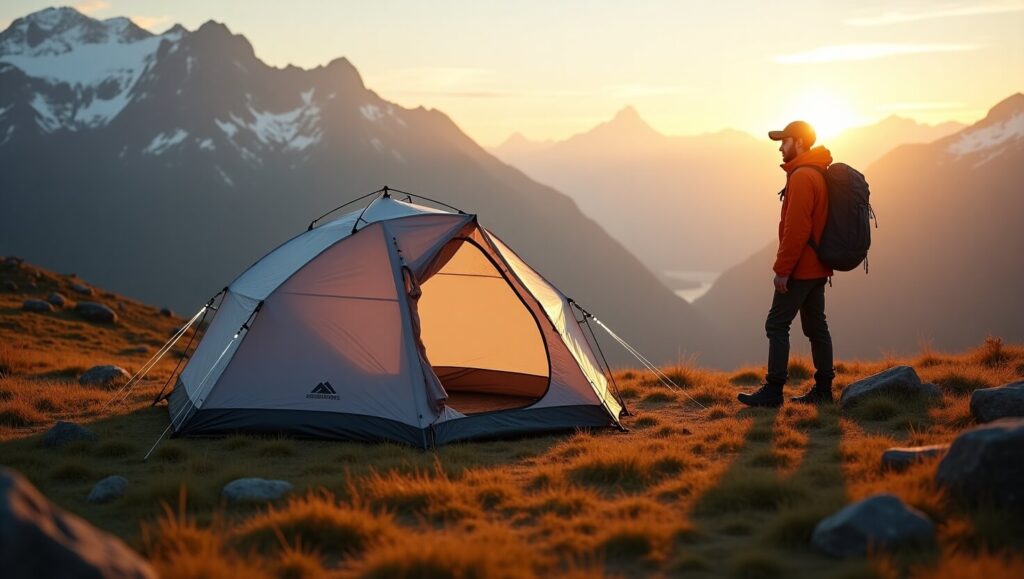
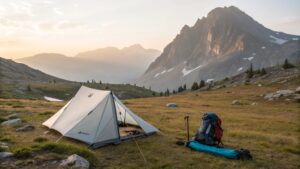
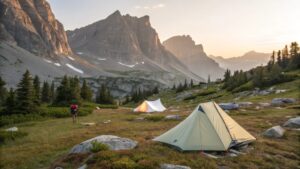
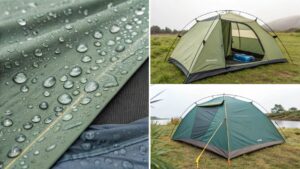
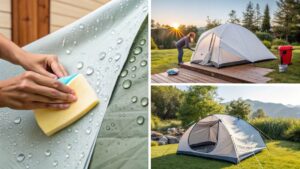
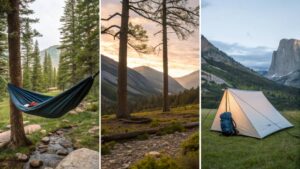
I love how your posts always leave me encouraged and excited.
Thanks!
This site provides an abundance of useful information on a variety of subjects. Thanks for all that you do.
Thank you! Your words mean a lot